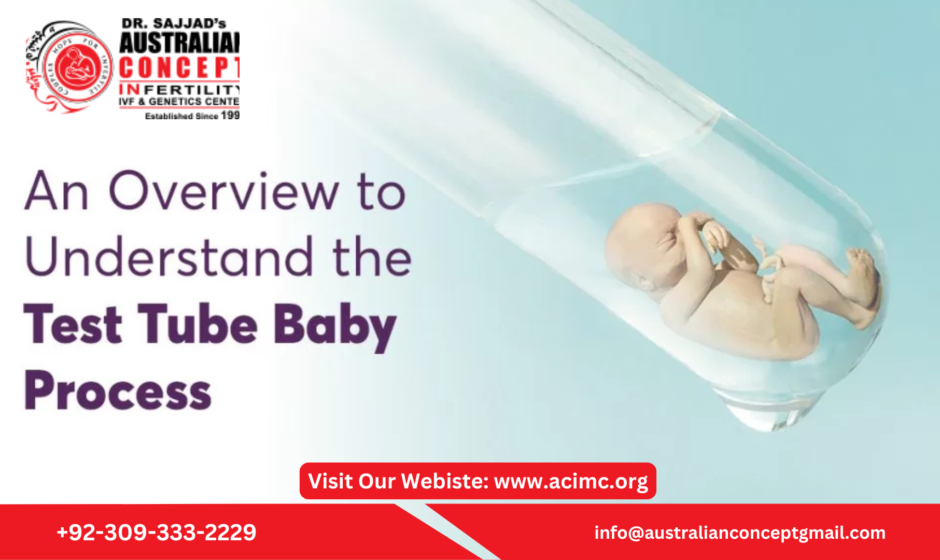The journey to parenthood can be filled with unexpected twists and turns, especially for those exploring the test tube baby procedure or in vitro fertilization (IVF). For many hopeful parents, understanding the success rates of IVF is a crucial step in this emotional and often daunting process. As technology advances and techniques improve, more individuals are turning to assisted reproductive technologies as a viable option for building their families. But how successful is this procedure What factors come into play when determining your chances? Let’s dive deep into the world of IVF success rates and discover what you need to know about achieving your dream of becoming a parent.
Understanding IVF Success Rates
Understanding IVF success rates is essential for anyone considering the test tube baby procedure. Success can be influenced by various factors, making it a complex topic. On average, the chances of a successful pregnancy through IVF range from 40% to 50% per cycle.
These statistics can vary depending on several variables such as age, reproductive history, and health conditions. For instance, younger women tend to have higher success rates compared to older patients.
It’s also important to consider that these numbers reflect averages; individual experiences may differ significantly. Some couples may achieve success in their first attempt, while others might require multiple cycles before realizing their dream of parenthood.
Additionally, advancements in technology continue to reshape these outcomes over time. Staying informed will empower you as you navigate this emotional journey toward starting or expanding your family.
Success Rates Based on Age
Age plays a crucial role in the success rates of the test tube baby procedure. As women age, their fertility naturally declines. This decline impacts both egg quality and quantity.
For women under 35, the success rate can exceed 40% per cycle. However, as they reach their late 30s and early 40s, those numbers start to drop significantly. Women aged between 35 and 37 often see a success rate around 30%.
When approaching age 40, that figure may fall below 20%. Beyond this point, many clinics recommend considering alternative options or additional cycles due to heightened challenges.
Men’s age also affects outcomes but tends to be less pronounced than in women. Nonetheless, older paternal age can still influence embryo health and overall chances of conception. Understanding these dynamics is essential for couples navigating their fertility journey.
Factors Affecting IVF Success Rates
Several factors play a pivotal role in determining the success rates of the test tube baby procedure.
Age is one of the most significant. Younger women tend to have higher success rates due to better egg quality and quantity. As age increases, both fertility and chances of successful implantation often decline.
Lifestyle choices also impact outcomes. Smoking, excessive alcohol consumption, and obesity can negatively affect IVF results. A healthy diet can improve overall reproductive health.
Medical history matters too. Conditions like endometriosis or polycystic ovary syndrome (PCOS) can complicate treatment plans and reduce success rates.
The expertise of your fertility clinic should not be overlooked. Clinics with experienced staff and advanced technology generally report higher success statistics than those without such resources.
Emotional well-being is essential during this journey. Stress management techniques may positively influence treatment effectiveness.
Improving Your Chances of IVF Success
Improving your chances of success with the test tube baby procedure involves a multi-faceted approach. First, maintaining a healthy lifestyle is crucial. A balanced diet rich in fruits, vegetables, and whole grains can support reproductive health.
Regular exercise also plays an important role. Aim for moderate activity to boost circulation and reduce stress levels without overdoing it. Mental well-being matters too; consider mindfulness practices or counseling to help manage anxiety during this journey.
Additionally, communication with your fertility specialist is key. They can provide tailored advice based on individual circumstances and medical history. Following their recommendations closely increases the likelihood of positive outcomes.
Staying informed about advancements in fertility treatments can empower you throughout the process. Knowledge leads to better decision-making and enhances overall confidence as you pursue parenthood through IVF.
Success Rates with Frozen vs. Fresh Embryos
When considering the test tube baby procedure, one intriguing aspect is the comparison between frozen and fresh embryos. Fresh embryos are created during a current IVF cycle and transferred shortly after fertilization. Many believe this method has higher success rates due to the embryo’s immediate vitality.
On the other hand, frozen embryos have gained popularity in recent years. Advances in cryopreservation techniques have improved their survival rates significantly. In some cases, thawed embryos can even outperform fresh ones when it comes to implantation.
Factors such as age, ovarian response, and specific fertility issues greatly influence outcomes for both options. It’s essential for couples to discuss their individual circumstances with their healthcare provider to determine which approach might suit them best.
Each option presents unique advantages that can impact overall success rates in the test tube baby journey.
Conclusion:
The journey of the test tube baby procedure can be both exciting and daunting. Understanding the various factors that influence success rates can empower individuals and couples considering this path to parenthood. It’s clear that age plays a significant role, as younger women tend to have higher success rates due to better egg quality. Additionally, individual medical histories, lifestyle choices, and even emotional well-being can impact outcomes significantly.
For More Details: https://acimc.org


